Côte d’Ivoire is home to an incredible variety of birds, with more than 600 species of bird recorded across the country. From the majestic crowned cranes to the colourful bee-eaters, the birds of Côte d’Ivoire are a delight to see and to hear.
Whether you are a bird-watcher or enjoy the beauty of nature, the birds of Côte d’Ivoire will provide an unforgettable experience. From the coast to the forests, the birds of Côte d’Ivoire offer something for everyone.
9 Birds Of Côte D’Ivoire
Côte d’Ivoire, also known as Ivory Coast, is a country in West Africa known for its rich biodiversity. Here are nine bird species that can be found in Côte d’Ivoire:
1. Heliornithidae
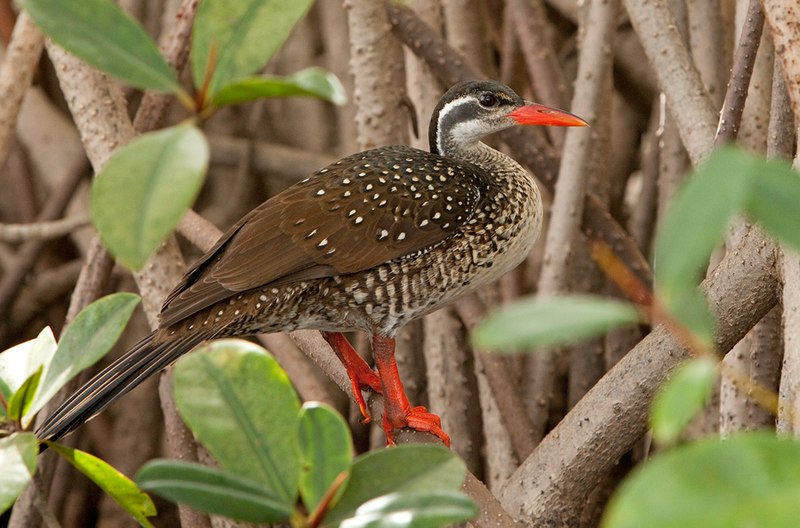
Heliornithidae, commonly known as finfoots, are a small family of tropical birds found in South America and Africa. They have webbed feet like grebes or coots, long necks, slender bodies and broad tails with sharp, pointed bills.
Their diverse calls include whistles, squawks and croaks, which they use to communicate with each other.
Finfoots feed mainly on fish but also consume insects such as water beetles and dragonflies near the surface of water bodies.
They nest around rivers or lakes with plenty of cover from predators such as eagles or hawks.
During the breeding season, males can become quite territorial, defending their territories against intruders by chasing them off aggressively using loud noises or even physical contact if necessary.
Scientific classification:
| Kingdom | Animalia |
| Phylum | Chordata |
| Class | Aves |
| Order | Gruiformes |
| Family | Heliornithidae GR Gray, 1840 |
2. African Jacana
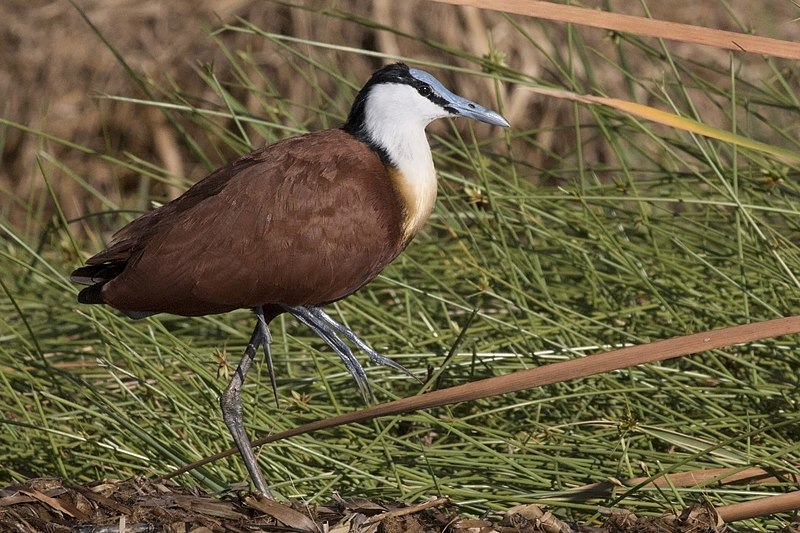
The African Jacana is a charming wader belonging to the family of Jacanidae, mostly found in sub-Saharan Africa.
It has long toes and claws that allow it to walk on floating vegetation in shallow lakes, which form its preferred habitat.
Johann Friedrich officially described the bird in 1789 with an interesting origin and pronunciation for its name -Jacanidae.
This aquatic bird is known for its striking plumage features like yellow crowns and black wings marked with chestnut brown stripes across them, making them look even more attractive when they spread their wing feathers during courtship displays.
They feed mainly on insects, tadpoles, frogs, etc., skimming nearby water surfaces or plucking prey from vegetation as they wander around these wetlands areas.
Scientific classification:
| Kingdom | Animalia |
| Phylum | Chordata |
| Class | Aves |
| Order | Charadriiformes |
| Family | Jacanidae |
| Genus | Actophilornis |
| Species | A. africanus |
3. Red-Throated Bee-Eater
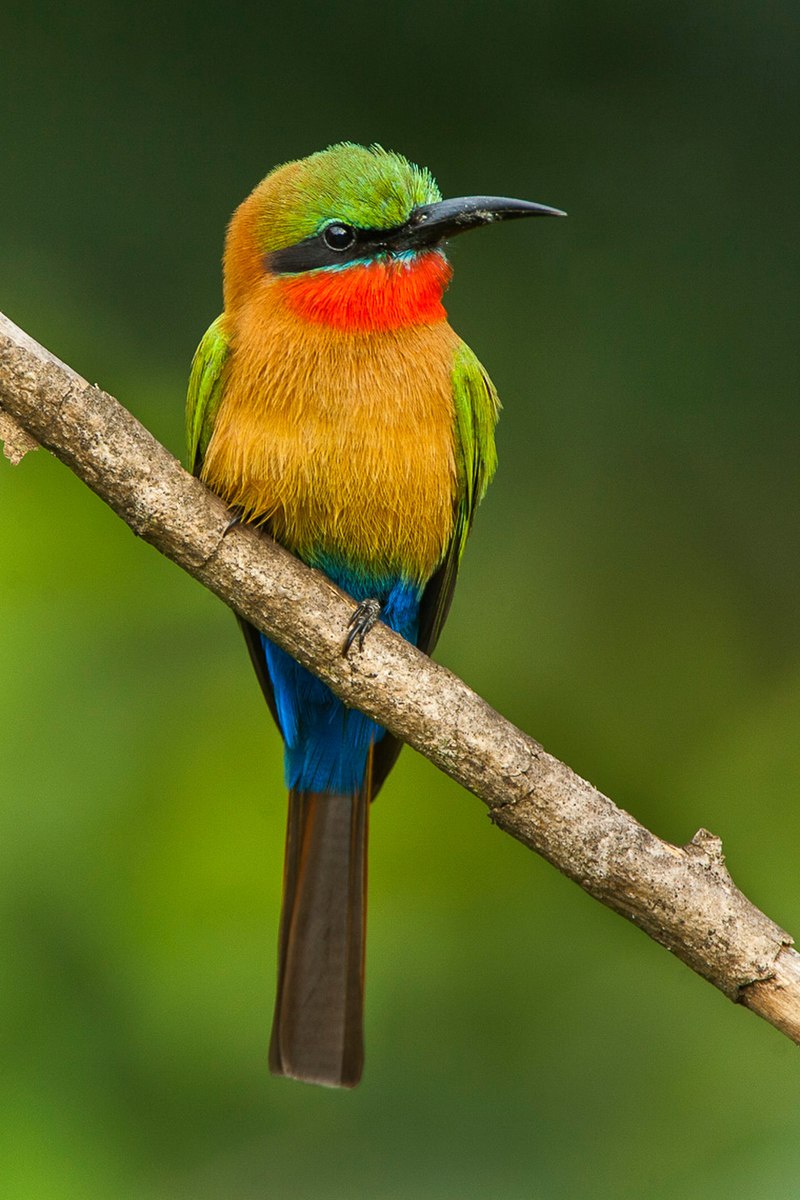
The Red-throated Bee-eater is a beautiful species of bird found in tropical Africa. It has bright red feathers covering its throat, giving it a distinct look.
Its body is mostly brown with white stripes, and its wings are dark blue on the tips.
This species enjoys an extensive range throughout countries like Benin, Burkina Faso, and Togo, to name just a few.
These birds feed mainly on insects that they catch in midair or from nearby foliage during their hunting flights over open country habitats such as woodlands and savannas.
While not much else is known about this particular type of bee-eater, these colourful creatures have surely become quite popular due to their striking beauty.
Scientific classification:
| Kingdom | Animalia |
| Phylum | Chordata |
| Class | Aves |
| Order | Coraciiformes |
| Family | Meropidae |
| Genus | Merops |
| Species | M. bulocki |
4. Brown-Cheeked Hornbill
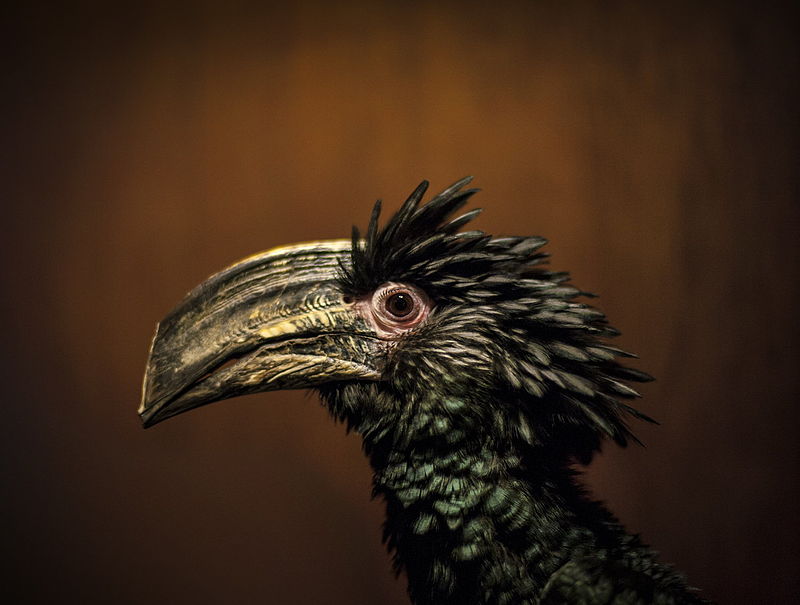
The Brown-Cheeked Hornbill is a species of bird from the Bucerotidae family, native to West Africa and found in countries such as Ivory Coast, Ghana, Guinea, Liberia and Sierra Leone.
It prefers to inhabit tropical or subtropical moist forests and plantations with secondary growths.
Unfortunately, its populations are declining due to habitat destruction caused by human activities such as timber harvesting.
This beautiful bird has brown feathers on its body, while its head feathers are black with yellow stripes running down either side at the top of its head towards the eyes, with blue skin around them.
The males also feature an orange bill, while females lack this trait completely, instead having a dark grey one.
Despite being threatened, they remain quite common across their range. However, conservation efforts must be undertaken if we wish for these birds to continue living happily for many more years.
Scientific classification:
| Kingdom | Animalia |
| Phylum | Chordata |
| Class | Aves |
| Order | Bucerotiformes |
| Family | Bucerotidae |
| Genus | Bycanistes |
| Species | B. cylindricus |
5. Black-Winged Kite
The Black-winged Kite is a small, diurnal bird of prey in the Accipitridae family. It can be found throughout the Palearctic and Afrotropical regions.
This species stands out from other birds of prey due to its unique ability to hover over open grasslands like kestrels do.
Its wings are black with white patches on them, while its body has grey feathers, giving it a distinct look from the rest of the accipiters.
The underside is mostly white, with some barring near the tail area that helps distinguish this species from others.
They feed mainly on insects but will also eat rodents, lizards and even snakes if they come across one.
Because these birds hunt during daylight hours, their diet changes as time passes by – making them quite adaptive hunters.
Scientific classification:
| Kingdom | Animalia |
| Phylum | Chordata |
| Class | Aves |
| Order | Accipitriformes |
| Family | Accipitridae |
| Genus | Elanus |
| Species | E. caeruleus |
Also Featured In: Bulgarian Birds, Hong Kong Birds You Need to See
6. Senegal Thick-Knee
The Senegal Thick-Knee is a large wading bird found in Africa. It has long yellow or greenish legs, prominent joints, and a black and yellow beak.
This species breeds between the Sahara Desert and the equator, as well as in the Nile Valley, making it one of Africa’s most widespread birds.
They are solitary creatures but can often be seen perching on fences or trees, looking out for prey such as insects and small rodents, which they hunt using their strong bills.
The Senegal thick-knee also feeds on carrion, scavenging food from other animal sources when available.
During the breeding season, these birds become more vocal, producing loud calls that can travel across miles of open terrain to attract mates and establish territories.
Overall, this unique African resident provides an important link in its local ecosystem by providing both food resources for predators and keeping insect populations under control through hunting activities.
Scientific classification:
| Kingdom | Animalia |
| Phylum | Chordata |
| Class | Aves |
| Order | Charadriiformes |
| Family | Burhinidae |
| Genus | Burhinus |
| Species | B. senegalensis |
7. Yellow-Casqued Hornbill
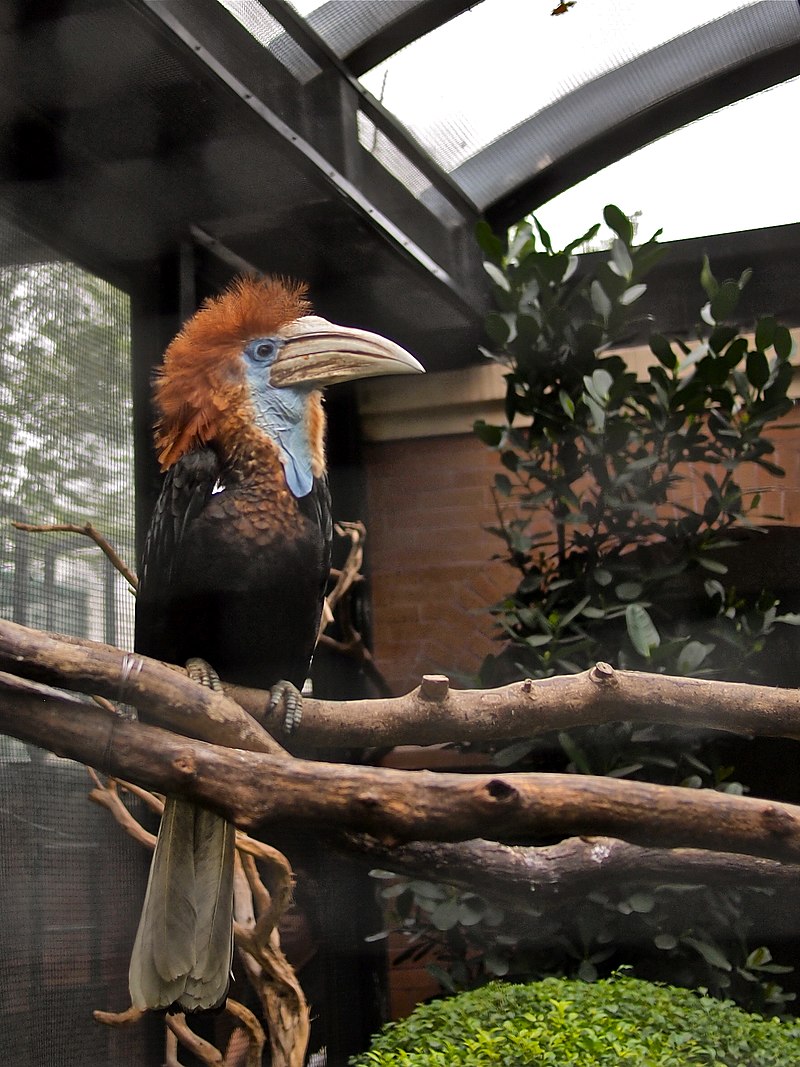
The Yellow-casqued Hornbill is an impressive bird found in the rainforests of West Africa. It has a bright yellow casque on its head and weighs up to 2kg, making it one of the largest birds in its region.
Its primary habitat is in the canopy, where it feeds mostly on fruits, insects and small animals like lizards or frogs.
They are known for their loud calls, which can be heard from far away during mating season when pairs join together to nest near tree hollows or cavities built by other species.
A monogamous pair stays together throughout the breeding season, with both parents taking turns incubating eggs and feeding chicks until they can fly off into independence day.
These unique creatures have adapted well to their environment since ancient times, but habitat destruction and human hunting activity threaten this species greatly today, forcing conservationists across continents to fight for their protection through policy change and public awareness campaigns.
Scientific classification:
| Kingdom | Animalia |
| Phylum | Chordata |
| Class | Aves |
| Order | Bucerotiformes |
| Family | Bucerotidae |
| Genus | Ceratogymna |
| Species | C. elata |
8. African Pied Hornbill
The African pied hornbill is a beautiful bird from the family of tropical near-passerine birds found in the Old World.
It is widely distributed across equatorial Africa, ranging from The Gambia to western Uganda and northern Angola.
This species prefers habitats with plenty of trees for it to nestle in and make its home.
When breeding season arrives, females lay up to four white eggs inside tree holes that are sealed off by the males using mud or other materials as part of their nesting ritual.
These magnificent creatures have distinctive features such as black feathers on their bodies contrasted against bright yellow eyes and strikingly long beaks, which they use mainly for eating fruit and insects.
They are an important part of African ecosystems and should be protected at all costs so future generations can continue appreciating these majestic birds.
Scientific classification:
| Kingdom | Animalia |
| Phylum | Chordata |
| Class | Aves |
| Order | Bucerotiformes |
| Family | Bucerotidae |
| Genus | Lophoceros |
| Species | L. fasciatus |
9. Red-Eyed Dove
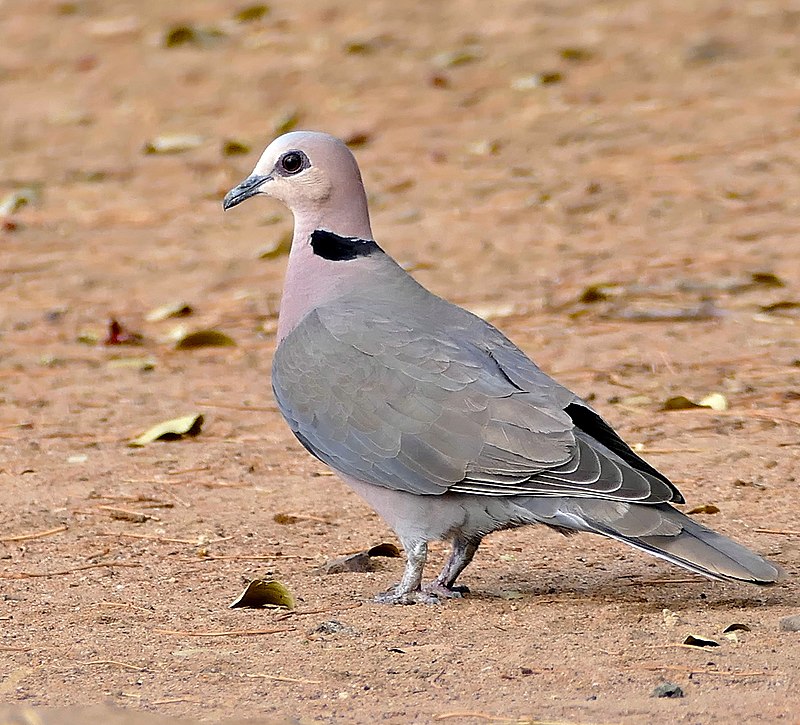
The red-eyed dove (Streptopelia semitorquata) is an attractive bird native to Sub-Saharan Africa. It was first described by German naturalist Eduard Rüppell in 1835 and, since then, has been listed as Least Concern on the IUCN Red List.
These birds have a distinct appearance with greyish brown upperparts, paler underparts and a distinctive half collar of dark feathers around their neck.
They also have bright red eyes contrasting sharply against their otherwise dull plumage.
The diet of the red-eyed dove consists mostly of seeds and grains found on the ground or from shrubs, but they will occasionally eat insects, too.
This species is quite common across its range, making it one of nature’s most eye-catching creatures.
Scientific classification:
| Kingdom | Animalia |
| Phylum | Chordata |
| Class | Aves |
| Order | Columbiformes |
| Family | Columbidae |
| Genus | Streptopelia |
| Species | S. semitorquata |